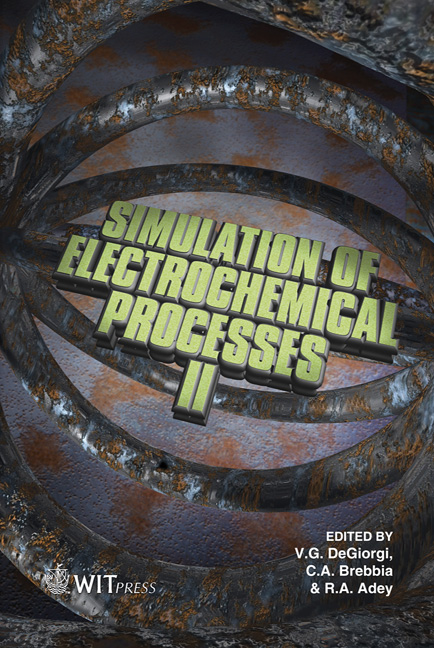Experimental Study And Modelling Of Heat Transfer During Anodizing In A Wall-jet Set-up
Price
Free (open access)
Transaction
Volume
54
Pages
10
Published
2007
Size
1,203 kb
Paper DOI
10.2495/ECOR070191
Copyright
WIT Press
Author(s)
T. Aerts, G. Nelissen, J. Deconinck, I. De Graeve & H. Terryn
Abstract
The anodizing of aluminium is an electrochemical surface treatment yielding the formation of an alumina film, the characteristics of the formed oxide strongly depending on the considered anodizing conditions. Heat transfer has an important influence on the anodizing process, which can be explained by considering the production of heat near the aluminium anode, combined with the significant influence of the local electrode temperature on the process of oxide formation. The influences of temperature and heat transfer on the growth of the anodic oxide film during anodizing of high purity Al are studied on a laboratory scale in a wall-jet electrode reactor. The impinging jet configuration of the reactor creates a non-uniformly accessible electrode with variable convection as a function of the radial position on the anode. The influence of the resulting non-uniform heat transfer on the local temperature of the electrode is monitored by local temperature measurements on the backside of the aluminium anode, whereas its influence on local film growth is evaluated by means of FEG-SEM surface and cross sectional analyses. A comparison between the simulated and experimentally acquired data is presented. The controlled and known electrolyte flow in the wall-jet reactor enable numerical simulations of the convection which supply additional information on the encountered conditions of heat transfer. The anodizing process itself is simulated using a model based on the high field theory. Keywords: aluminium, anodizing, heat transfer, wall-jet reactor, modelling.
Keywords
aluminium, anodizing, heat transfer, wall-jet reactor, modelling.





